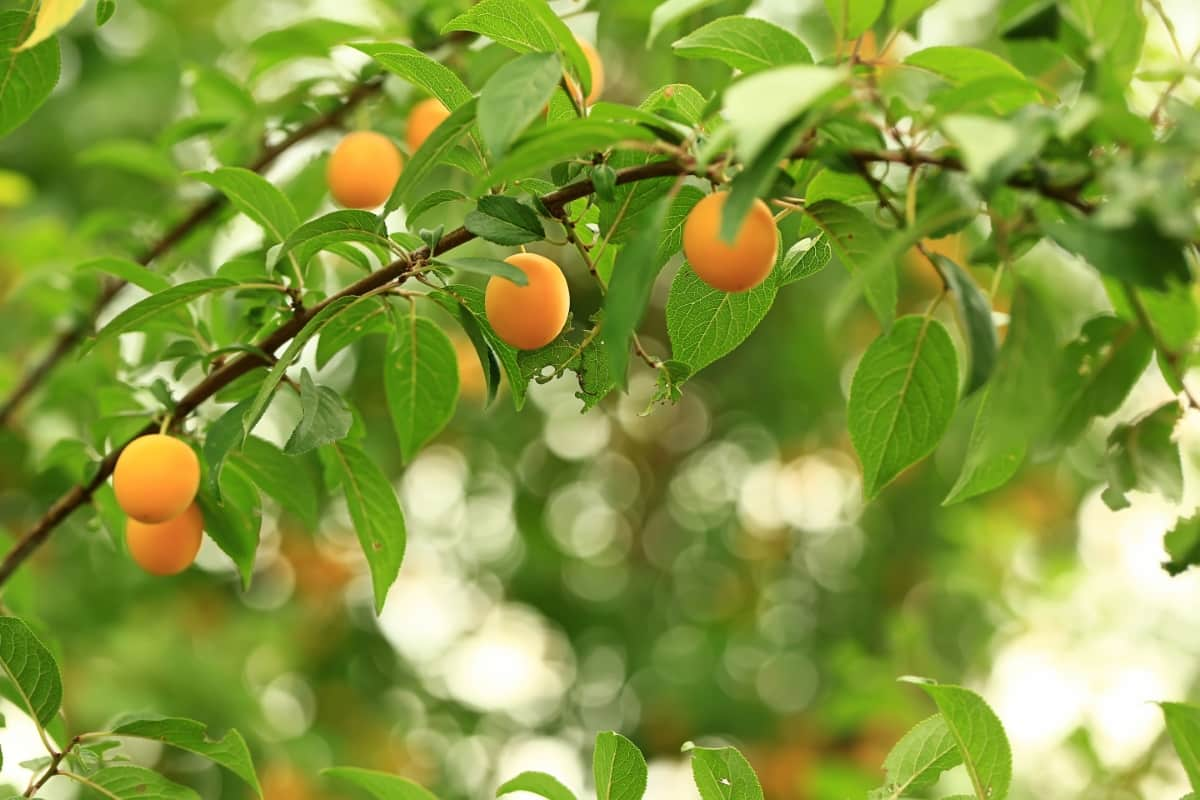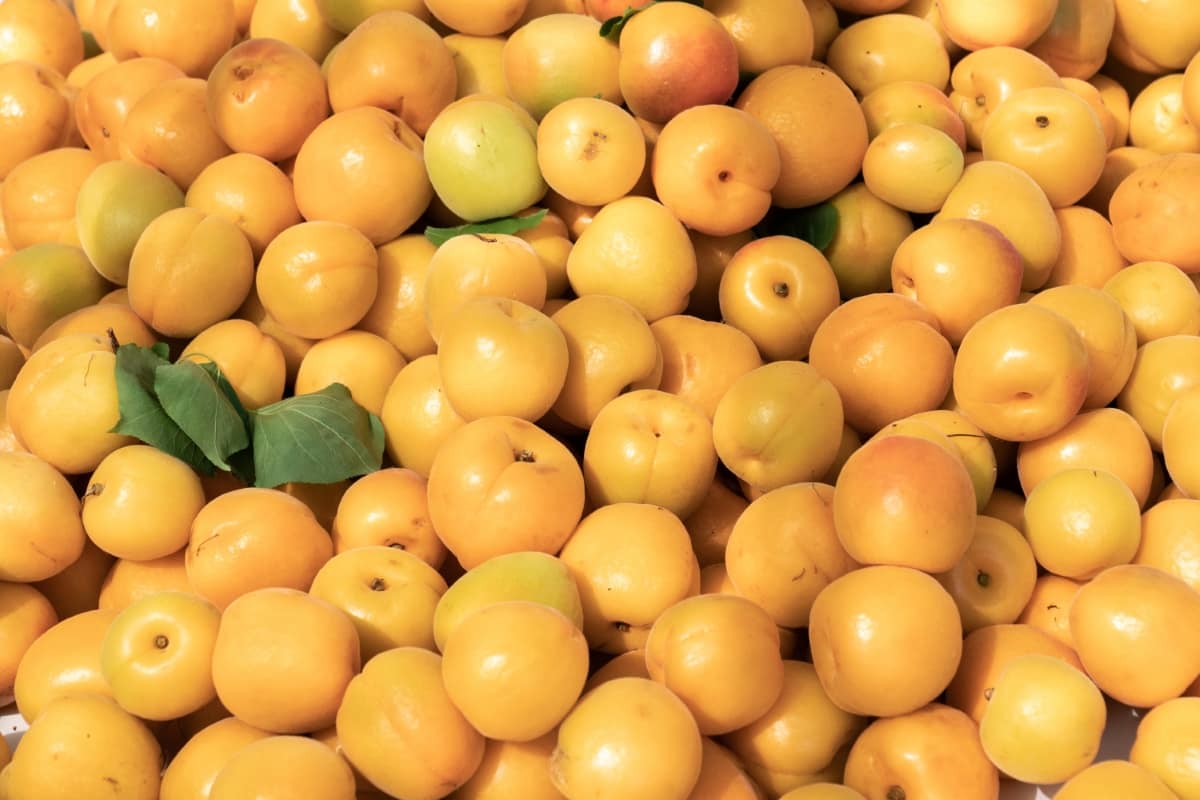Yellow plums are an incredibly versatile and delicious fruit that has been savored for generations. Originating primarily in Europe and Asia, these succulent fruits have found their way into gardens and orchards worldwide. What variety are yellow plums? They come in various types like Mirabelle, Yellowgage, and Shiro, each with distinct flavors and uses.

How healthy are yellow plums? They are rich in vitamins, minerals, and antioxidants, offering a range of health benefits, from improving digestion to boosting immunity. Are yellow plum trees self-pollinating? Generally speaking, most yellow plum varieties need a pollinator, although some types are self-pollinating.
All About Yellow Plum
Cultivation and Growing Conditions for Yellow Plum Trees
If you’re interested in cultivating your yellow plum trees, there are several factors you’ll need to consider to ensure a successful harvest. These trees prefer well-drained, loamy soil and require full sun for optimal growth. The trees should be spaced at least 15 to 20 feet apart to allow for adequate air circulation.
The best time to plant is in the fall or early spring, depending on your climate. When it comes to watering, young trees need regular watering, but mature trees are relatively drought-tolerant. Fertilizing is generally done in the early spring and late summer, and it’s important to keep an eye on soil pH levels to maintain optimal nutrient absorption.
Nutritional Value and Health Benefits of Yellow Plums
What are the benefits of yellow plums? Yellow plums are a nutritional powerhouse that offers an array of health benefits. Yellow plums are packed with vitamins A, C, and K, and they have fiber that’s good for digestion and keeping blood sugar in check. These fruits are loaded with antioxidants that fight off damage in the body and lower the chance of long-term illnesses. If you want a healthy snack, go for yellow plums as they’re low in calories and fat. They even have potassium to help with blood pressure and magnesium that’s important for lots of body processes.
Yellow Plum Recipes: Delicious Ways to Enjoy This Fruit
When it comes to enjoying yellow plums, the possibilities are almost endless. Yellow plums are perfect for jams, jellies, and chutneys, where their natural sweetness and tartness can shine. You can also put them in pies, tarts, and cakes, or use them to create sauces for meat dishes. Their distinct flavor profile also lends itself well to cocktails and beverages. For a simple yet satisfying treat, consider making a yellow plum sorbet or grilling them and serving them with a dollop of cream.
In case you missed it: Growing Japanese Plum from Seed: Seed Germination, Planting, and Care

Pests and Diseases Affecting Yellow Plum Trees: Prevention and Treatment
Aphids, plum curculio, and Japanese beetles are common pests that can cause significant damage. As for diseases, bacterial canker and plum pox are two major concerns. Prevention is key, so it’s crucial to regularly inspect trees for signs of infestation or disease.
Pesticides can be used to combat pests, but following all guidelines and precautions is essential to ensure you’re not harming beneficial insects or pollinators. Copper sprays can be effective for bacterial diseases, but they must be applied at the correct time and dosage. Proper pruning techniques can also help in disease prevention and treatment.
Harvesting and Storing Yellow Plums: Best Practices
It’s time for harvest once the yellow plums have reached their peak ripeness, usually indicated by a deep yellow color and a slightly soft texture. The fruit should be picked gently to avoid bruising, which can reduce its storage life. After harvesting, yellow plums can be stored in a cool, dry place for up to a week or in the refrigerator for up to two weeks.
For longer-term storage, consider freezing, canning, or drying the plums. If you plan to use the plums in recipes, it’s often best to process them shortly after harvesting to maintain their flavor and nutritional value.
Yellow Plum Varieties: A Comprehensive Guide
Various types of yellow plums are available, each with unique characteristics. The Mirabelle plum, originating from France, is small and sweet, making it excellent for preserves and baking. The Yellowgage, or Golden Gage, has an exquisite honey-like flavor and is often enjoyed fresh or in desserts.
In case you missed it: 9 Causes of Dying Plum Trees and How to Fix Them?

Shiro plums are Japanese and have a mild, sweet taste that makes them versatile for cooking and fresh eating. Regardless of your variety, yellow plums offer a delightful combination of flavor, texture, and nutritional benefits, making them a wonderful addition to any garden or kitchen.
The Role of Yellow Plums in Traditional Medicine and Folklore
Yellow plums have held a special place in culinary practices, traditional medicine, and folklore. In various cultures, they’ve been used as a natural remedy for digestive issues, given their fiber content, and as an immune booster due to their high vitamin C levels.
Folk tales and myths in some cultures also attribute mystical qualities to the yellow plum tree, associating it with good fortune and prosperity. In Eastern medicine, yellow plums have been used in tonics and decoctions to balance bodily fluids and improve energy levels. These practices highlight yellow plums’ holistic role in human history, serving both nutritional and symbolic purposes.
Yellow Plum Industry: Production, Consumption, and Market Trends
The yellow plum industry has grown significantly in recent years, propelled by increasing consumer awareness about the fruit’s health benefits and culinary versatility. Production is spread across different regions, with Europe and parts of Asia being major contributors. Advanced farming techniques and innovations in storage and transportation have increased the availability of yellow plums, thereby boosting consumption.
Market trends indicate a growing demand for organic and sustainably grown plums, and this fruit is gradually becoming a staple in health-conscious diets. The industry also has a strong export market, with yellow plums reaching international supermarkets and specialty stores.
Yellow Plum Vs. Other Stone Fruits: A Comparative Analysis
Compared to other stone fruits like peaches, cherries, and apricots, yellow plums offer unique characteristics that set them apart. In terms of nutritional value, they hold their own, rich in vitamins and minerals, yet lower in calories, making them a preferred choice for weight-conscious consumers. Texture-wise, yellow plums offer a pleasing combination of juiciness and firmness, providing culinary versatility that is sometimes lacking in other stone fruits.
In case you missed it: How to Prune Plum Trees: Best Time to Trim, Tools and Techniques to Cut Back Plum Trees

Moreover, yellow plums have a unique tartness that complements their sweetness, offering a more complex flavor profile. While peaches and cherries may dominate in certain culinary applications, yellow plums excel in preserves, tarts, and sauces, providing a distinct taste that’s both unique and delightful.
Conclusion
Whether it’s their role in traditional medicine, their growing presence in the market, or their unique features compared to other stone fruits, yellow plums have carved a niche for themselves.
- Feed Your Flock for Less: Top 10 Tips to Save on Chicken Feed
- Ultimate Guide to Ossabaw Island Hog: Breeding, Raising, Diet, and Care
- Hatching Answers: The Top 10 Reasons Your Chickens Aren’t Laying Eggs
- Eggs and Economics: Breaking Down the Cost of Raising Backyard Chickens
- Defend Your Greens: Proven Methods to Keep Iguanas Out of Your Garden
- Ultimate Guide to Cinnamon Queen Chicken: A Comprehensive Guide for Beginners
- Ultimate Guide to California Tan Chicken: Breeding, Raising, Diet, Egg-Production and Care
- Ultimate Guide to Marsh Daisy Chicken: Breeding, Raising, Diet, and Care
- 10 Types of Chicken Farming Businesses You Can Start for Profits